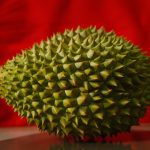If you’re looking for natural alternatives to Febreze, DIY fabric refreshers are a fantastic option. You can easily whip up your own using simple ingredients like water, white vinegar, baking soda, and essential oils. This allows you to control what goes in your home, avoiding harsh chemicals while saving money. Plus, it’s fun to experiment with different scents! Keep exploring to discover easy recipes and tips for crafting your fabric freshening sprays.
Table of Contents
Key Takeaways
- DIY fabric refreshers can save money while providing a natural alternative to commercial products like Febreze.
- Ingredients such as water, white vinegar, baking soda, and essential oils create effective, non-toxic solutions.
- Customizable scents allow for personal preferences, making the fabric refresher unique to your taste.
- Application involves shaking well, testing on fabrics, and ensuring proper drying for the best results.
- Using these refreshers reduces waste by reusing spray bottles and avoiding harsh chemicals.
Benefits of DIY Fabric Refreshers
When you opt for DIY fabric refreshers, you not only save money but also gain control over the ingredients. You can tailor your concoction to suit your preferences, avoiding harsh chemicals often found in commercial products. This means you’re making a healthier choice for your home and family, especially if anyone has allergies or sensitivities.
Plus, crafting your own refreshers can be a fun and creative process. You get to experiment with various scents and combinations, finding what truly works for you.
Another benefit is that you can reduce waste by reusing spray bottles instead of buying new ones. Ultimately, DIY fabric refreshers provide a cost-effective, eco-friendly solution that meets your unique needs.
Essential Ingredients for Natural Fabric Refreshers
To create an effective natural fabric refresher, you’ll need a few essential ingredients that are both safe and easy to find. Start with water as the base, which helps dilute other ingredients.
Next, grab some white vinegar; it neutralizes odors and acts as a natural disinfectant. Baking soda is another must-have, as it absorbs smells and adds freshness.
For a pleasant scent, consider essential oils like lavender, lemon, or eucalyptus, which also have antibacterial properties.
Finally, a spray bottle will help you mix and apply your refresher easily.
With these ingredients, you can create a safe and effective fabric refresher that leaves your home smelling great without harsh chemicals.
Simple Recipes for Homemade Fabric Refreshers
Now that you know the essential ingredients for your fabric reinvigorators, let’s talk about some simple recipes you can whip up at home.
You’ll discover various scent options to customize your spray and learn easy application techniques to keep your fabrics smelling fresh.
Let’s get started on creating your own revitalizing blends!
Basic Ingredients Needed
Creating your own fabric refresher is a simple and rewarding project that can transform your living spaces.
To get started, you’ll need a few basic ingredients. First, grab a spray bottle—preferably glass or BPA-free plastic. Next, you’ll want distilled water as your base; it’s free from impurities that could affect your mixture.
Add white vinegar for its natural deodorizing properties, and if you prefer a bit of softness, consider including a small amount of fabric softener.
Finally, essential oils can elevate your refresher with delightful scents. Just remember, a few drops go a long way!
With these ingredients, you’re well on your way to creating a revitalizing solution that’s both effective and eco-friendly.
Scent Variations Ideas
While you can stick to a basic fabric refresher, experimenting with different scents can add a personal touch to your home.
To create a calming lavender spray, mix one cup of water with a tablespoon of lavender essential oil.
For a revitalizing citrus scent, combine one cup of water with the juice of one lemon and a few drops of lemon essential oil.
If you love floral notes, try mixing one cup of water with two tablespoons of rose water.
For a cozy, warm fragrance, blend one cup of water with a teaspoon of vanilla extract and a few drops of cinnamon essential oil.
These simple recipes let you customize your fabric refresher to reflect your unique style!
Application Techniques Explained
Applying your homemade fabric refresher is as important as making it, and there are a few effective techniques to guarantee you get the best results.
First, shake your mixture well before each use to evenly distribute the scents. Next, test a small area of your fabric to verify it doesn’t discolor.
When you’re ready to apply, hold the spray bottle about 6-8 inches away and mist lightly over the fabric. Avoid soaking; a fine mist works best. For upholstery, focus on high-traffic areas.
Let the fabric dry completely before using it again to let the scent settle. Finally, store any leftover refresher in a cool, dark place to preserve its fragrance longer.
Enjoy the fresh results!
Tips for Using Fabric Refreshers Effectively
Using fabric refreshers can transform your living space, and there are several tips to guarantee you get the finest results. First, always test your refresher on a small, inconspicuous area to avoid any unwanted reactions. Additionally, spray lightly and evenly, allowing the fabric to dry completely for maximum scent release. For best results, use your refresher in well-ventilated areas.
| Tip | Description |
|---|---|
| Test Before Use | Apply to a hidden spot first |
| Spray Evenly | Confirm an even distribution on the fabric |
| Allow to Dry | Let the fabric dry completely for best results |
Storing and Preserving Your DIY Sprays
Proper storage is essential for maintaining the effectiveness of your DIY fabric refreshers.
First, choose a dark glass spray bottle to protect your mixture from light, which can degrade essential oils and other ingredients. Make sure the bottle is tightly sealed to prevent evaporation and contamination.
Store your sprays in a cool, dry place, away from direct sunlight and heat sources. You’ll want to label each bottle with the date you made it and its ingredients, ensuring you can track freshness.
Most DIY fabric refreshers last about two weeks, but you can extend their life by refrigerating them.
Always shake the bottle before each use, as ingredients can separate over time, ensuring you get the best results every time.
Additional Natural Odor Eliminators to Consider
While storing your DIY fabric refreshers is important for longevity, there are plenty of other natural odor eliminators you can explore to tackle unwanted smells in your home.
Here are four effective options:
- Baking Soda: Sprinkle it on carpets or upholstery, let it sit, then vacuum. It absorbs odors like a sponge.
- Activated Charcoal: Place bags or bowls around your home. It’s a powerhouse at trapping unwanted smells.
- White Vinegar: Mix equal parts with water in a spray bottle. It neutralizes odors without lingering scents.
- Lemon Juice: Combine with water and spray on fabrics. Its fresh scent brightens the air while eliminating mustiness.
Try these alternatives, and enjoy a fresher, more inviting atmosphere!
Frequently Asked Questions
Can I Use Essential Oils for Fabric Refreshers on All Fabrics?
You can use essential oils for fabric refreshers, but be cautious. Some fabrics may react poorly, causing stains or damage. Always test a small, inconspicuous area first to verify compatibility and avoid any unwanted surprises.
How Often Should I Apply Homemade Fabric Refreshers?
Like a gentle breeze on a warm day, you should apply your homemade fabric refresher every few days. However, adjust based on the scent strength and your personal preference. Trust your senses to guide you!
Are DIY Fabric Refreshers Safe for Pets?
DIY fabric refreshers can be safe for pets, but it’s essential to choose pet-friendly ingredients. Always test a small area first, and make certain your pets aren’t around until the fabric dries completely to avoid irritation.
Can I Mix Different Essential Oils in One Recipe?
Oh, the audacity of mixing essential oils! Yes, you can blend them in one recipe, creating your aromatic masterpiece. Just make certain they complement each other, or you might end up with a scent catastrophe.
Will Fabric Refreshers Stain or Discolor My Fabrics?
Fabric refreshers can sometimes stain or discolor your fabrics, especially if they contain certain ingredients. Always test a small, inconspicuous area first to guarantee your fabrics remain unaffected and maintain their original appearance.
- What Is Pochampally Ikat? a Journey to India’s Silk City - June 27, 2025
- What Is Pochampally Ikat? a Journey to India’s Silk City - June 27, 2025
- What Is Pochampally Ikat? a Journey to India’s Silk City - June 27, 2025





